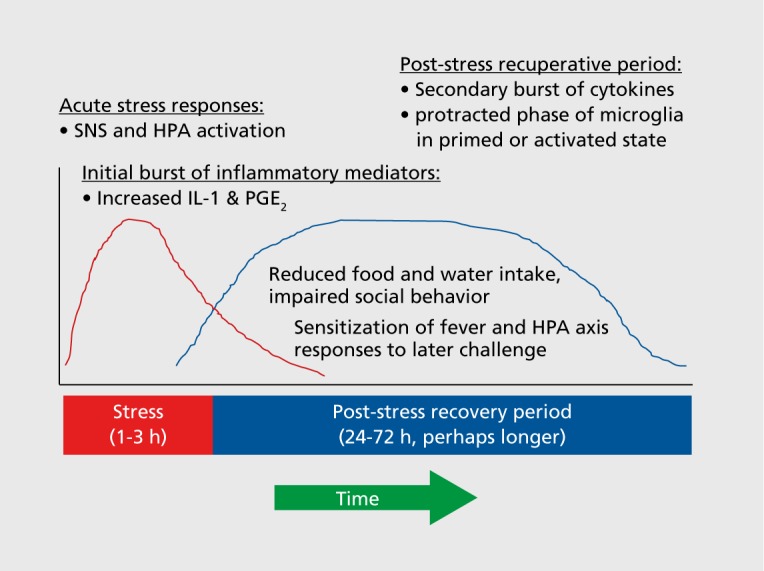Figure 2. Stress-related neuroinflammation mediates the post-stress recuperative period. Acute stress induces activation of the sympathetic nervous system and HPA axis, leading to release of inflammatory factors, such as cytokines (eg, IL-1), chemokines (eg, CCL2/MCP1), and prostaglandins (eg, PGE2). These factors regulate various features of the post-stress recuperative period, in which the subject displays reduced food and water intake, impaired social behavior, and often sickness-like responses. This constellation of behavioral changes probably represents a recuperative motivational state that promotes recovery after intensely stressful experiences. CCL2/MCP1, chemokine (C-C motif) ligand 2, also referred to as monocyte chemoattractant protein 1; HPA, hypothalamic-pituitary-adrenal; IL, interleukin; PGE2, prostaglandin; SNS, sympathetic nervous system.

